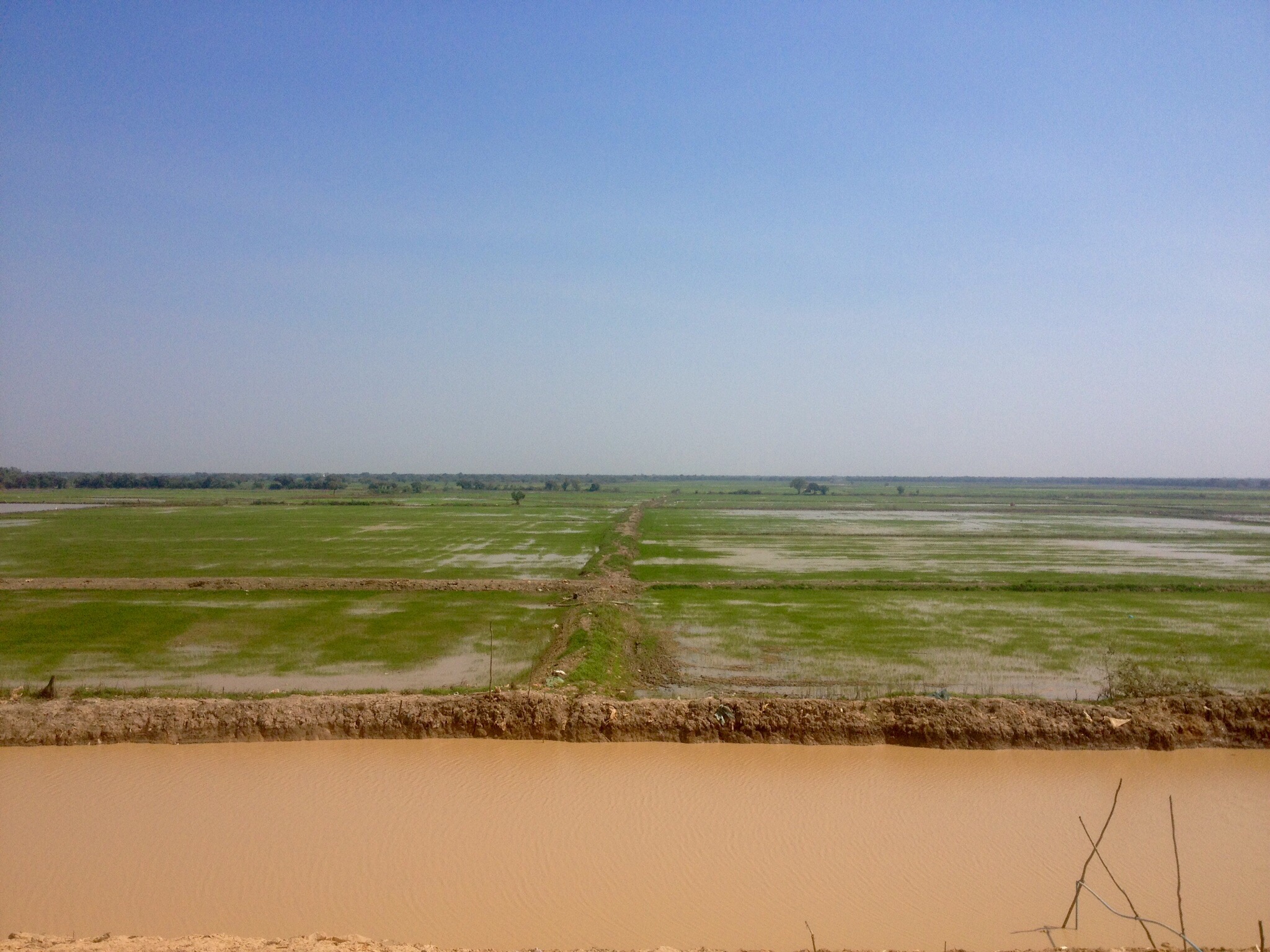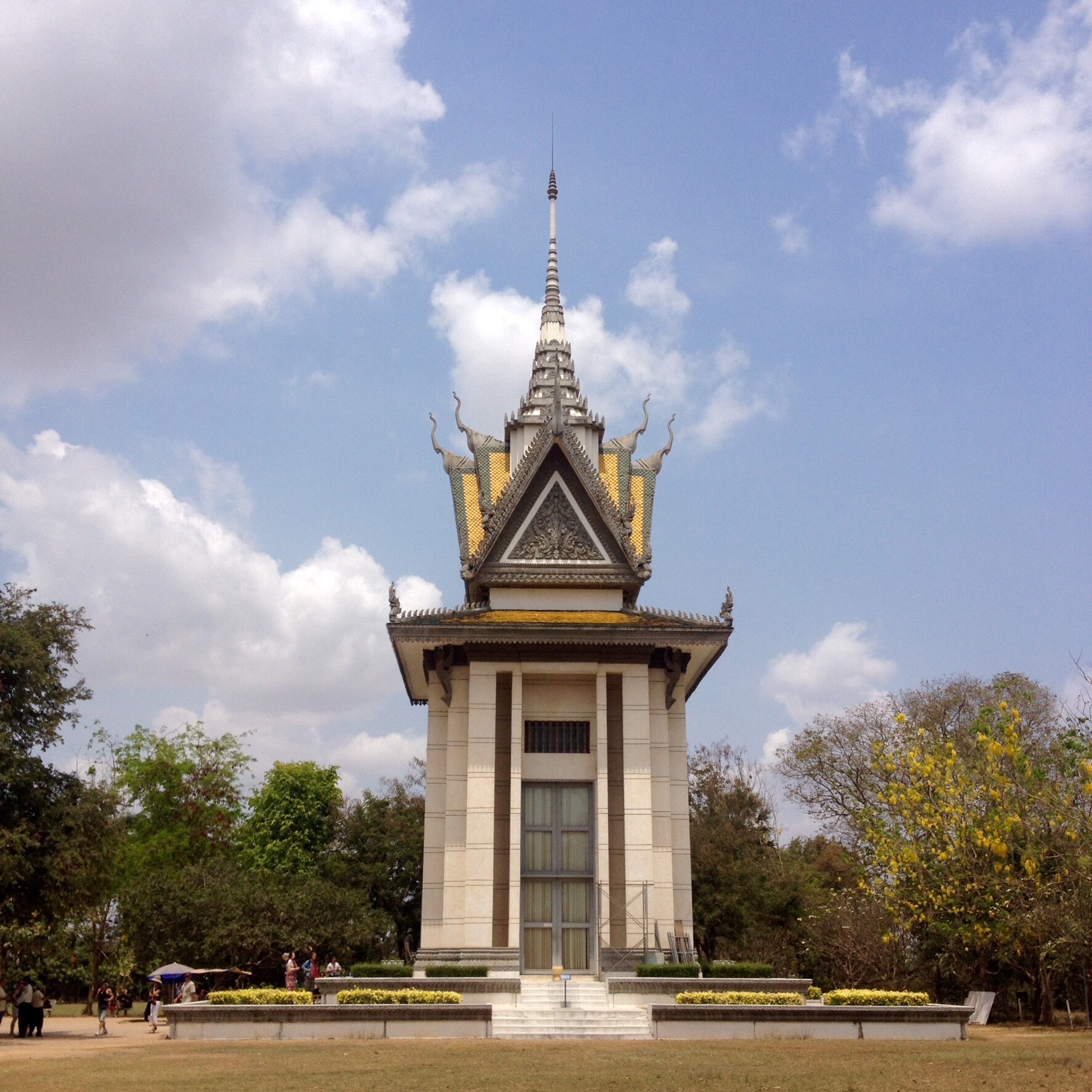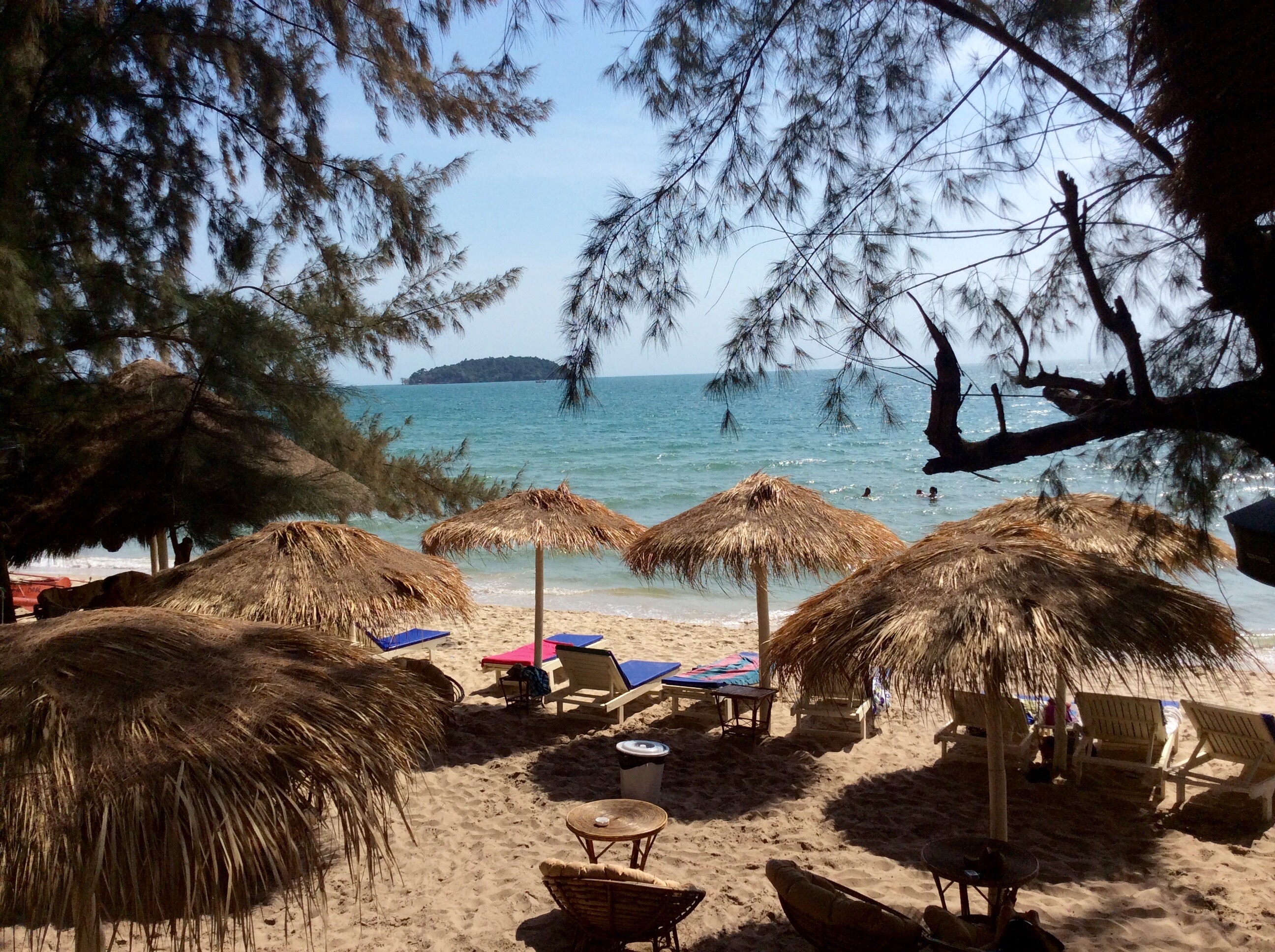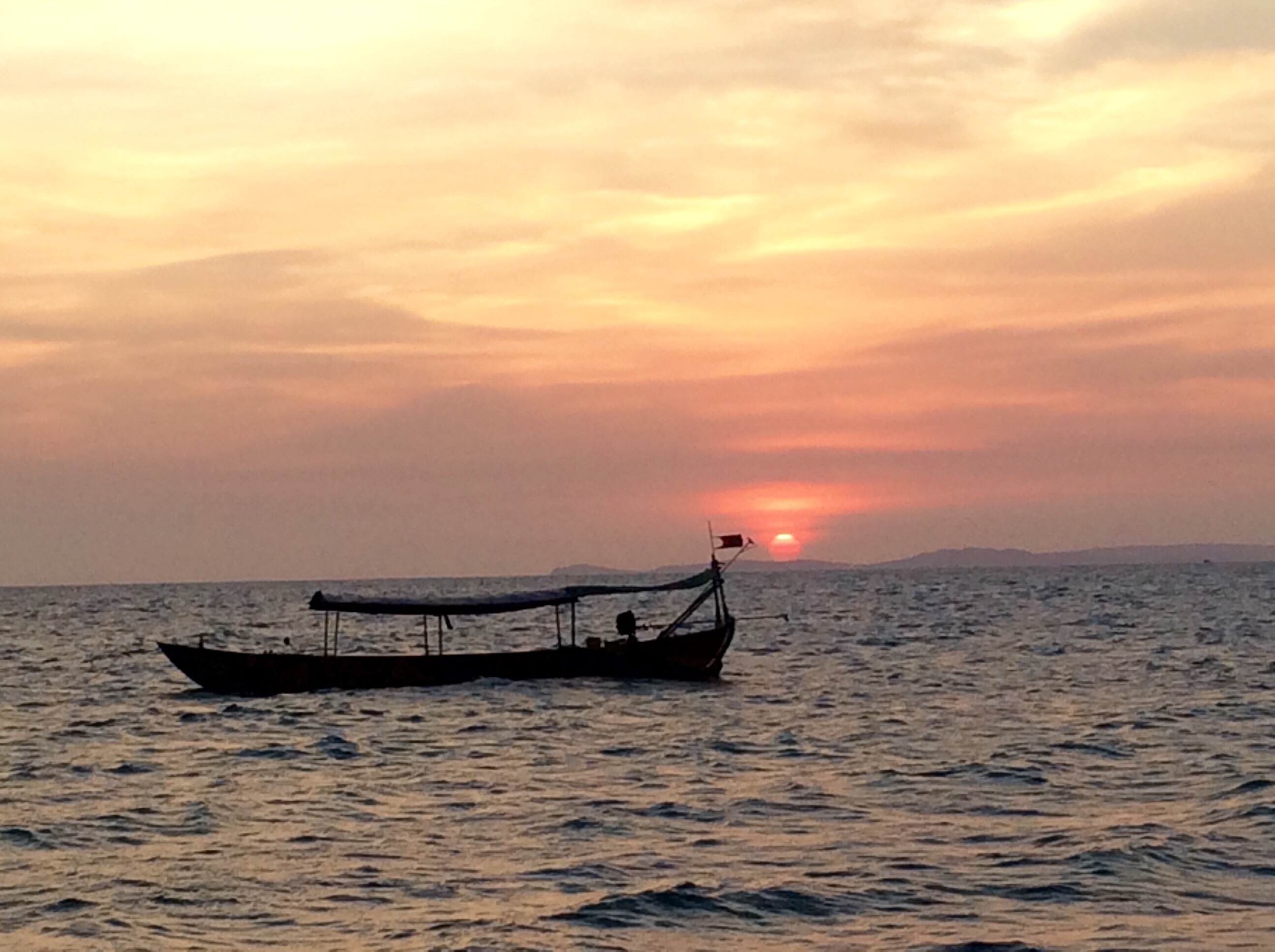Cambodia has a population of 15 million and is about 3/4 the landmass of the UK, so not as empty as Laos but nevertheless ridding between cities there were few cars.
The Khmer Rouge took power in 1975 led by Pol Pot and the new regime modeled itself on Maoist China, evacuated the cities and sent the entire population on forced marches to rural work projects. They discarded medicine and destroyed temples, libraries, and anything considered Western. Between 1.5 – 2.5 million people (20% of the population) were killed from 1975 – 1979 and gave rise to the term Killing Fields.
Cambodia remains one of the world’s poorest countries and hugely reliant on outside help. It lies on the Mekong, one of Asia’s great rivers, which provides fertile land for rice crops.
Tourism is increasing and ‘Angkor Wat’ is the number one place people visit. It’s the largest religious monument in the world and one of the most important archaeological sites of Southeast Asia built by the Khmer King in the 12th century. Angkor Archeological Park extends over 400 square kilometres and consist of many temples. Angkor Wat is the main temple which for several centuries was the centre of the Khmer Kingdom.
Phnom Penh like many Asian cities has extremes of life, the poor working and living on the streets and the rich driving around in some of the most expensive cars in the world. After the genocide between 1975 – 1979 the people returned to Phnom Penh and claimed the land and buildings which they had been banished from. With 20% of the population having been killed and the social and economic structures obliterated people moved into wherever they wanted and many through corruption in this period ended up selling land and buildings making them very rich in the coming years. The car is a status symbol in much of Southeast Asia and nowhere is it more evident than in Phnom Penh where many people have ‘designer cars’. It’s not uncommon for a government worker earning a few hundred dollars per month to be driving around in a top of the range Lexus paid for by the sale of land.
The vast mast majority of Cambodians in Phnom Penh live on little income and get around on old scooters / small motorbikes. A stone dropped into a pond causes ripples outwards, the same is true of poverty, the further you move away from the city the poorer people are. There aren’t any Range Rovers in the villages, people work the fields as they have for centuries.
Olly and I took various bus journeys on poor quality roads, on one occasion I had the misfortune of sitting in the middle front row seat which meant I had a full view of the journey ahead. The driver was reckless as he overtook all other vehicles on the road. These mini buses must crash from time to time, the consequences must be horrific!
‘Otres Beach’ Is 5km away from Sihanoukville and reminds me of Koh Samui, Thailand 25 years ago when I was there in 1990. Beautiful tropical beach which is undeveloped with a few wooden beach bungalows, bars & restaurants. Very cool and chilled out with no two week tourists, just travellers who seek these wonderful places out to relax for a few days or months before travelling on. It will change, it’s evident with the land all around parcled up with for sale signs everywhere. The developers and Cambodian authorities are about to bring the tarmac & concrete men in and when they do the cool, chilled out travellers will move out and seek the new ‘Otres Beach’ wherever it is in the world. As I returned to Koh Samui recently and saw the commercialisation I wonder if Olly, my son will return in years to come and say he was here before the developers arrived?
















